Helping You Heal, Grow, and Prosper

Download our daily planner for productivity and peace of mind for free
It has helped clients to make more strategic decisions, prioritise effectively, and feel better.
This is Emerge to Prosper
We help driven leaders master emotional intelligence and communication to build thriving businesses and fulfilling lives. With multilingual coaching and a global perspective, we've guided entrepreneurs from pre-seed startups to Fortune 500.
Trusted by top brands:






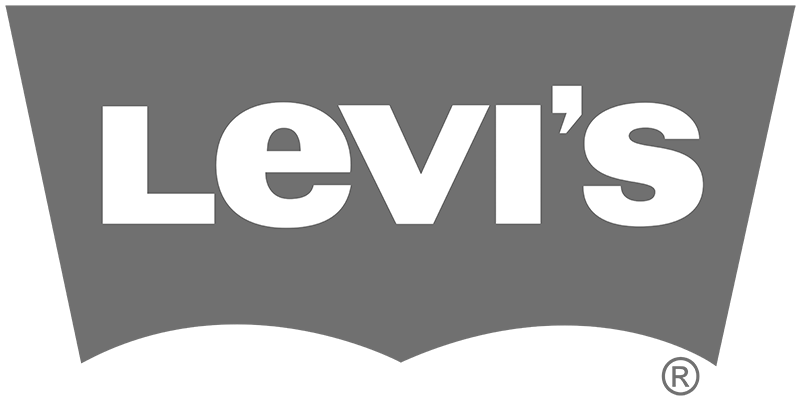



Ready to lead with clarity?
Individual Coaching
You want to heal, grow, and create a life where success feels aligned with who you truly are.
Business Coaching
You’re ready to lead your business with clarity, foster collaboration, and unlock your team’s full potential.
What clients say

"We’ve experienced remarkable growth over the past year, 5x’ing our business and scaling from a team of 3 to 15 full-time employees. Jorim's coaching has been pivotal in navigating this transformation. His ability to clarify priorities, identify opportunities, and provide actionable advice has had a direct impact on our success."
Nate Klatt, CEO of HomeHop

"Jorim is a great listener that asks insight-provoking questions. Jorim's EQ is through the roof and definitely helped me generate various breakthroughs. I'd highly recommend him as a founder/CEO coach."
Charles Cormier, serial entrepreneur, CEO of TopLeads Agency
"... we've scaled to 30 million in annual revenue and Jorim has been instrumental in helping navigate this incredible journey..."
Dave Lane, Head of Growth at Fella Health

"I worked together with Jorim at the second edition of European Innovation Academy. Jorim took on the vital role of a life coach for all the participants which means coaching them both in professional and personal development as well as helping them in managing their team dynamics and cooperation. He was a very valuable addition to the line up of high quality of mentors to help the teams achieve their highest potential and enjoy the experience."
Karin Künnapas, Managing Director at EstBan
The Go Deeper Planner
This planner helps you concentrate and stay focused on what matters. There are two versions for you to download:
Day
From 4am to 24pm.
Night
From 9am to 8am.
Congratulations, you just got your hands on a planner that will support your wellbeing and productivity. Below, you will find a brief instruction on how it’s meant to be used. However, feel free to adjust its usage to what works best for you.How did I wake up today?
Take a moment to be present with yourself. Do I feel groggy, excited, have a headache, or am I hungry? Noting how you wake up builds awareness of how sleep affects your energy, focus, and motivation throughout the day.Critical Tasks
List a maximum of three essential tasks. These are non-negotiable. You can experiment with filling them in at the end of the previous day. These should be so critical that, if you complete them, you can consider the day successful and maybe even allow yourself to take the rest of the day off. However, finishing these often creates momentum for completing smaller, easier tasks too.Other Tasks
Add less urgent tasks here. Completing them is optional and should ideally happen only after you finish the critical tasks.Exercise & Meditation
Write down exercise or meditation plans to support your mental and physical wellbeing.Migrated tasks and prepared for tomorrow
At the end of your workday:
Finished tasks: Draw a smiley face
Migrated tasks: Write them on the next page and then mark them with an arrow >
Cancelled tasks: Mark with an “X” if you decide they aren’t important anymore.

What am I grateful for today?
Gratitude is key to feeling good. Note anything, big or small, that brought joy, comfort, or meaning to your day.What did I learn today?
This can be anything — a new skill, an insight, or even something silly.How do I go to bed?
Reflect on how you feel as you wind down. Are you calm, anxious, in physical pain, or emotionally light? This helps close the day with mindfulness.Is there anything buzzing in my mind?
To fall asleep more quickly and sleep more deeply, it helps clear one’s mind. Write down anything on your mind. Once it’s on paper, you can let it go.
How Jorim uses the planner:
Want to go deeper?
Also check out these other resources:
Coaching for a Life You’re Meant to Lead
Whether you’re navigating change, stepping into leadership, or simply craving more alignment — this is where you start showing up as the person you know you’re meant to be.

Coaching brings insights into action.
But it’s not just about productivity or mindset hacks.
It’s about coming home to yourself — and building a life from that place.At Emerge to Prosper, we work with individuals who are ready to grow on all levels: personally, professionally, and spiritually.
The Approach: Heal, Grow, Prosper.
Many coaching models focus only on goals and accountability.
Ours goes deeper — and further.We work across past, present, and future to support permanent change:
This process is gentle but transformative. It doesn’t bypass. It integrates.
🪞
Heal (Past)
We bring awareness to past experiences and unconscious patterns that may still shape your choices.
🌿
Grow (Present)
We strengthen your ability to lead yourself with clarity, presence, and confidence — moment to moment.
🌄
Prosper (Future)
We define what a fulfilling life looks like for you, and build the habits, decisions, and mindset to embody it.
This process is gentle but transformative. It doesn’t bypass. It integrates.
🔍 What You Might Work On
Every person is different — but here are some common coaching themes:
Gaining clarity in a life or career transition
Building emotional resilience and inner confidence
Improving communication and relationships (personal or professional)
Redefining success in a way that actually fits you
Healing patterns that keep you stuck in overgiving, under-earning, or self-doubt
Stepping into leadership or greater visibility
You don’t need to have it all figured out. That’s what we’re here for.
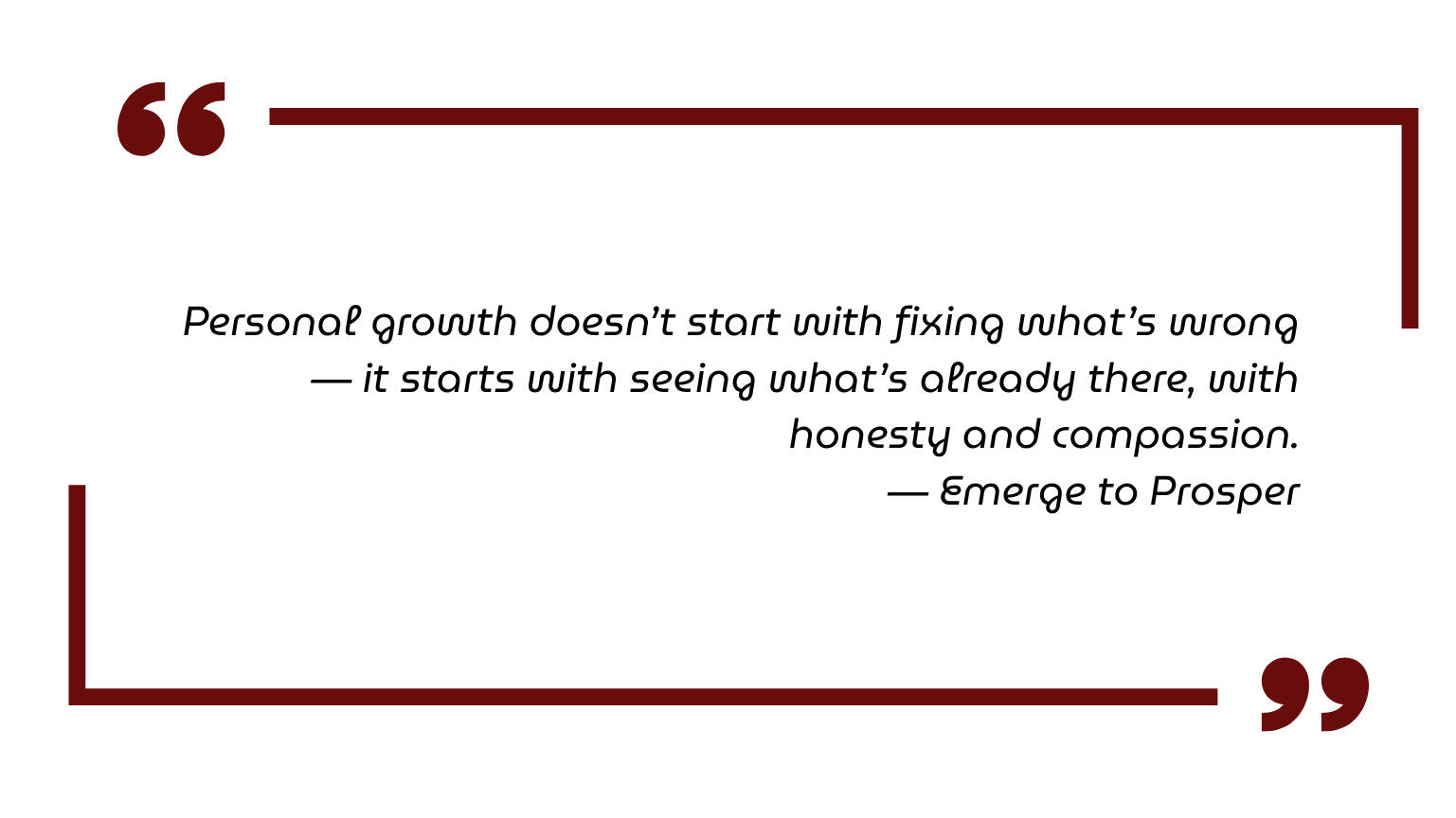
Curious what coaching could open up for you?
Let's have a first coaching call - no pressure, just presence.
FAQs
Coaching for companies that want more than performance.
We help leaders and teams grow in awareness, build trust, and take aligned action — because real success comes from within.

The Business Case for Coaching
More and more companies are investing in coaching — not just for executives, but for emerging leaders and whole teams.
Why? Because it works.According to the International Coaching Federation (ICF), coaching leads to:
Higher engagement and improved team performance
Better communication and leadership effectiveness
Stronger alignment and decision-making
And the numbers back it up:
Coaching typically returns 5–7x the initial investment. That's a significant ROI for businesses seeking long-term, people-centered growth¹.But coaching isn't just about performance — it's about people.
80% of people who receive coaching report increased self-confidence²
Confident leaders empower their teams, creating ripple effects of clarity, wellbeing, and resilience³
In short: Coaching doesn’t just shift behaviour: it helps people show up more grounded, more aware, and more committed.
Data from: 1) Startup Happiness: Coaching ROI; 2) International Coaching Federation, 2009; 3) O'Connor & Cavanagh, 2013

Coaching Solutions for Companies
We offer tailored coaching solutions to meet your team's real needs:
1:1 Coaching for Leadership. Support for founders, executives, and emerging leaders to develop vision, resilience, and presence.
1:1 Coaching for Employees & ICs. Help your team grow in self-awareness, communication, and ownership - not just skill.
Team Workshops. In-person or remote spaces to learn, reconnect, and work through what's unspoken.
Cultural Differences Workshops. Essential for international teams: navigate nuance, avoid friction, and build a shared language of collaboration.
Offsites & Retreats. Deep-dive days for teams to reflect, reset, and build clarity - away from the daily noise.
Custom Programmes. Mix and match based on your team's rhythm, structure, and business goals.
Packages That Fit Your Growth
Whether you want a light-touch or a deep transformation, we've got flexible formats:
Executive Package
For founders, CEOs, and C-level leaders to build their authenticity, coherence, and purposefulness.Includes:
13 Coaching sessions (usually fortnightly)
Unlimited voice note/text support
Strategy alignment calls with co-founders or key stakeholders
Optional offsite planning support
Leads Package
For senior managers and functional heads - the glue between strategy and execution.Includes:
13 Coaching sessions (usually fortnightly)
Unlimited voice note/text support
Leadership toolkits
Optional leadership group coaching
Rising Talent Package
For emerging leaders, ICs on the rise, and high-potential team members.Includes:
13 Coaching sessions (usually fortnightly)
Focus on self-leadership, ownership, and communication
Optional team workshops to reinforce culture
Companies That Use Coaching
Coaching is embedded in the culture of some of the most respected companies in the world. It’s not just for when things go wrong — it’s how great companies stay aligned, adaptive, and human.Here are a few examples:

Focus: Company-wide coaching access — not just for execs.
Impact: LinkedIn offers personalized 1:1 coaching to every employee, signaling that growth and self-awareness are universal priorities. Around 80% of participants are individual contributors, reinforcing a culture of feedback and personal leadership at all levels .
Find out more.

Focus: Leadership coaching and team facilitation.
Impact: Strengthened emotional intelligence and collaboration during times of cultural and organizational transition.
Find out more.

Focus: Coaching across leadership and cross-functional teams.
Impact: PayPal’s L&D programs consciously aim at business impact and team performance. Their Community Impact program engages employees in mentoring youth and small businesses, with 89% reporting positive growth . Coaching is also embedded in initiatives to enhance customer experience.
Find out more.
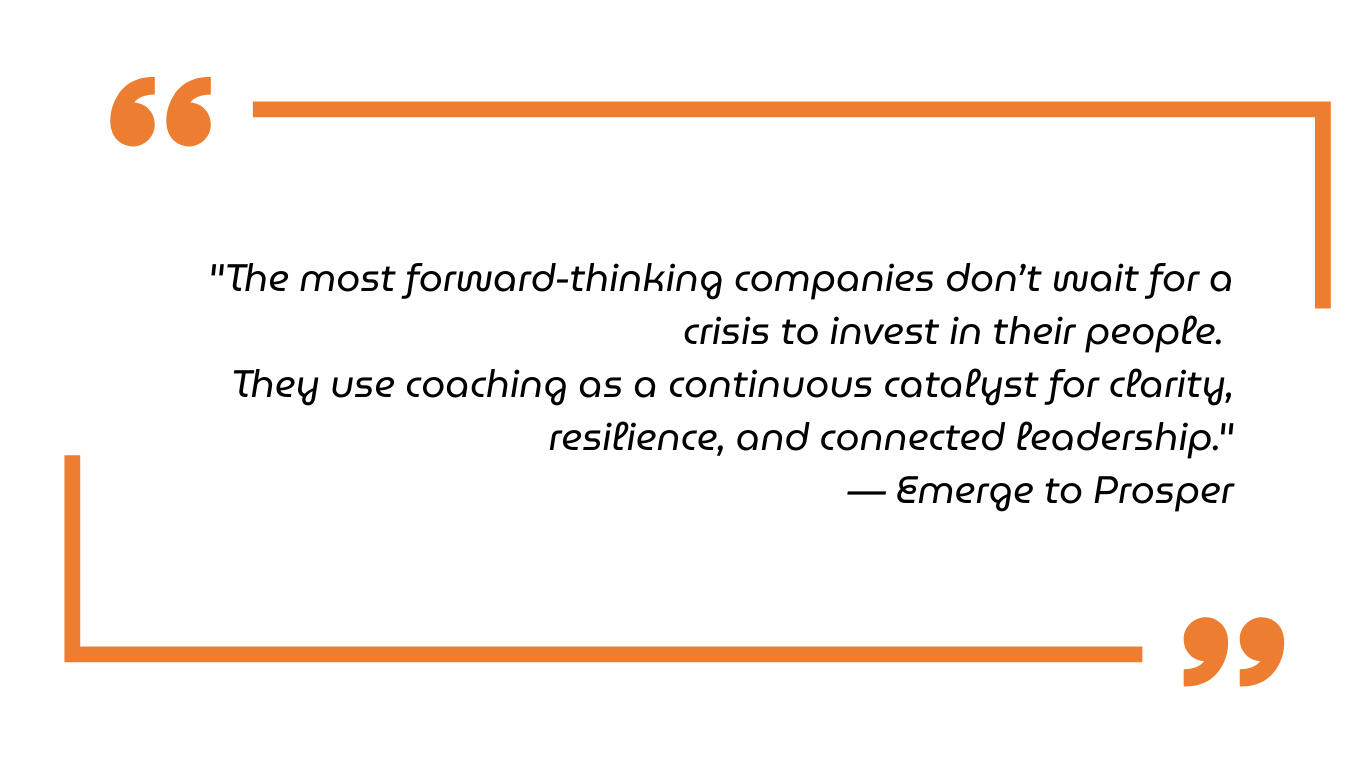
Special Focus: Cultural Differences
Make cultural diversity a strength — not a source of friction.In fast-growing, international teams, misunderstandings often aren’t personal — they’re cultural. Different communication styles, expectations, or feedback norms can quietly erode trust and slow momentum.We offer specialized coaching and workshops to help teams:
Recognize and adapt to different communication and feedback styles (direct vs indirect, high-context vs low-context)
Bridge gaps in decision-making expectations (top-down vs consensus-driven)
Uncover “invisible rules” that shape behaviour — and build a shared team language
Address unspoken tension rooted in cultural assumptions or power dynamics
Create more inclusive meetings, clearer boundaries, and deeper trust
Most of our coaches speak multiple languages fluently — and all have lived abroad and worked in multicultural teams.
This isn’t theory to us. It’s lived experience.
Ready to explore what coaching could unlock in your team?
Let’s have a conversation — no pressure, just clarity
FAQs

Helping You Heal, Grow, and Prosper
At Emerge To Prosper, we believe that every individual and organization holds the potential to evolve into their best selves. Our mission is to guide you on this journey, helping you heal from the past, strengthen your present, and build a future filled with purpose.
Our History
Emerge to Prosper was born with a clear vision: to help individuals and organizations be the creator of their lives, thrive through change, and develop an intentional path ahead.Its founder, Jorim Holtey-Weber is deeply passionate about entrepreneurship and mental health. As a psychologist who’s lived in 6 countries and speaks 5 languages fluently, he has a unique understanding of cultural differences - especially those relating to communication and leadership.Through his experience working with startup founders as well as global leaders in Fortune 500 companies such as PayPal, LinkedIn, and Airbnb, he identified a crucial need: combining personal and business growth. Businesses can be great vehicles for creating more resilient individuals that know how to focus on what’s most essential, create a stellar work attitude as well as enjoy their life outside of work more. Coaching can help you achieve that.Today, Emerge to Prosper supports entrepreneurs, executives, and teams on their journey to personal and business growth.
Our Values
At Emerge To Prosper, our values are the foundation of who we are. They guide how we connect, how we work, and how we create a meaningful impact on every individual and organization we support.
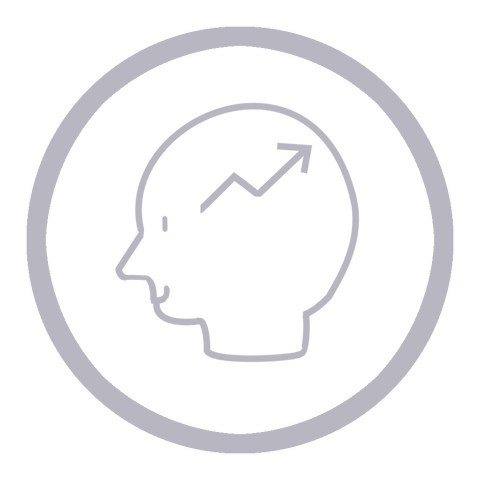
Mind on Growth
We want you to be the creator of your own path. We set bold ambitions while staying true to who we are, blending personal fulfilment with business success.
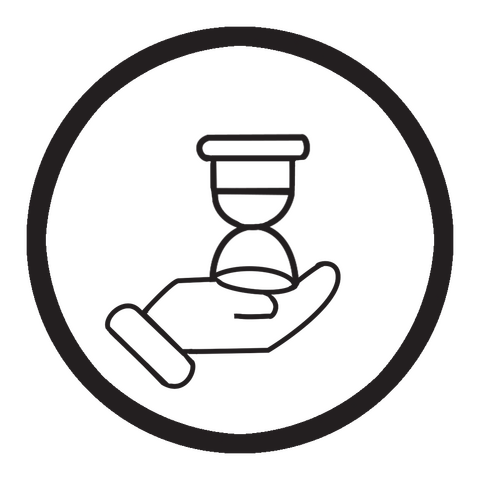
Timeliness
Every moment matters. We honour your time and ensure every moment is meaningful. We respect your pace and thoughtfully challenge you to grow into your next chapter.

Listen With The Heart
We listen with full presence and without judgment. With trust and empathy, we create a safe space where your unique story is heard and honoured.

Firmly Rooted
Lasting growth begins with strong foundations. Like the seasons, we adapt and balance deepening stability with the courage to evolve and welcome new growth.
Our Team
Lead with clarity. Grow with resilience. Prosper with purpose.
Whether you’re navigating personal transitions, building a stronger team, or scaling a company, coaching offers a space to pause, reflect, and move forward with confidence.

Who It's For
Coaching is for people who carry responsibility — for themselves, their teams, or their organizations.
Individuals & Leaders. Facing change, uncertainty, or growth. Seeking clarity, balance, and a sounding board to make better decisions.
Organizations & Teams. Companies moving fast. Teams learning to collaborate across cultures. Leaders wanting to align values, performance, and well-being.
What We Work On
Finding clarity in times of uncertainty
Building resilience and self-awareness
Leading with authenticity and purpose
Strengthening team culture and collaboration
Navigating growth and complexity without losing yourself

How Coaching Works
1:1 Coaching – Tailored sessions delivered by me or one of my trusted team members. Each conversation is designed around your context and challenges.
Manager Alignment Calls – Where relevant, we connect with managers to align expectations and ensure coaching integrates smoothly with team or organizational goals.
Team Coaching & Workshops – Supporting groups to build trust, alignment, and clarity as they grow together.
How Coaching Works
1:1 Coaching – Tailored sessions delivered by me or one of my trusted team members. Each conversation is designed around your context and challenges.
Manager Alignment Calls – Where relevant, we connect with managers to align expectations and ensure coaching integrates smoothly with team or organizational goals.
Team Coaching & Workshops – Supporting groups to build trust, alignment, and clarity as they grow together.
Next Step
Whether you’re here as an individual or representing a team, the first step is the same: book a session and let’s explore what coaching can do for you.
Founder Mentoring
Building a company is personal.When you’re a founder, business challenges and personal challenges often blur together. Decisions about strategy, growth, or hiring can’t be separated from your mindset, confidence, and leadership.Founder mentoring offers a trusted partner in the journey — someone who understands both the psychological weight of building something from scratch and the strategic challenges that come with it.
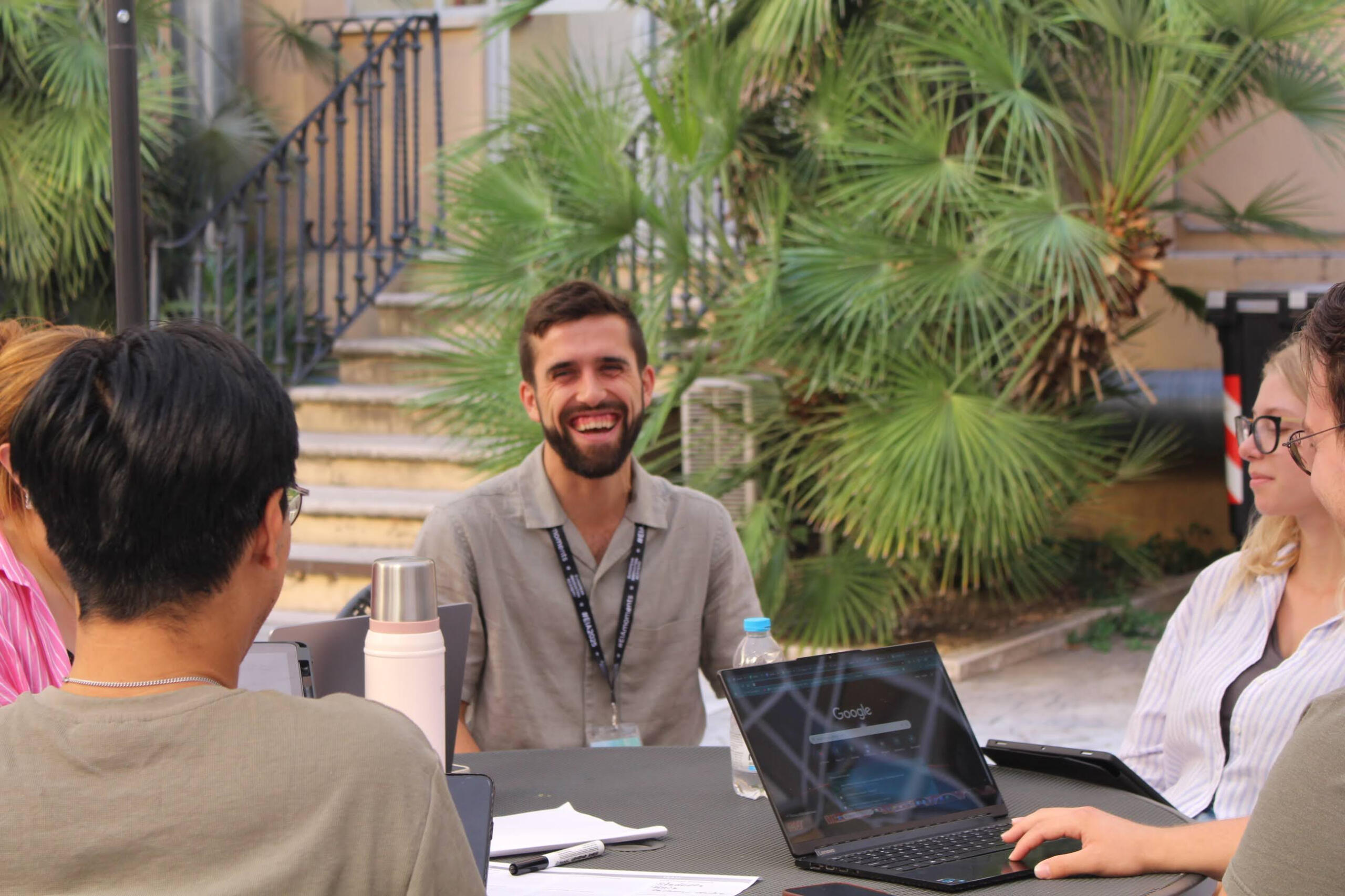
What We Work On
Confidence & Mindset – Finding clarity and resilience when uncertainty feels overwhelming.
Leadership & Communication – Growing into the leader your team needs, without losing yourself.
Strategic Thinking – Exploring options, thinking bigger, and challenging your assumptions.
Second Brain Support – A confidential sparring partner with additional “processing power” to help you navigate complexity.
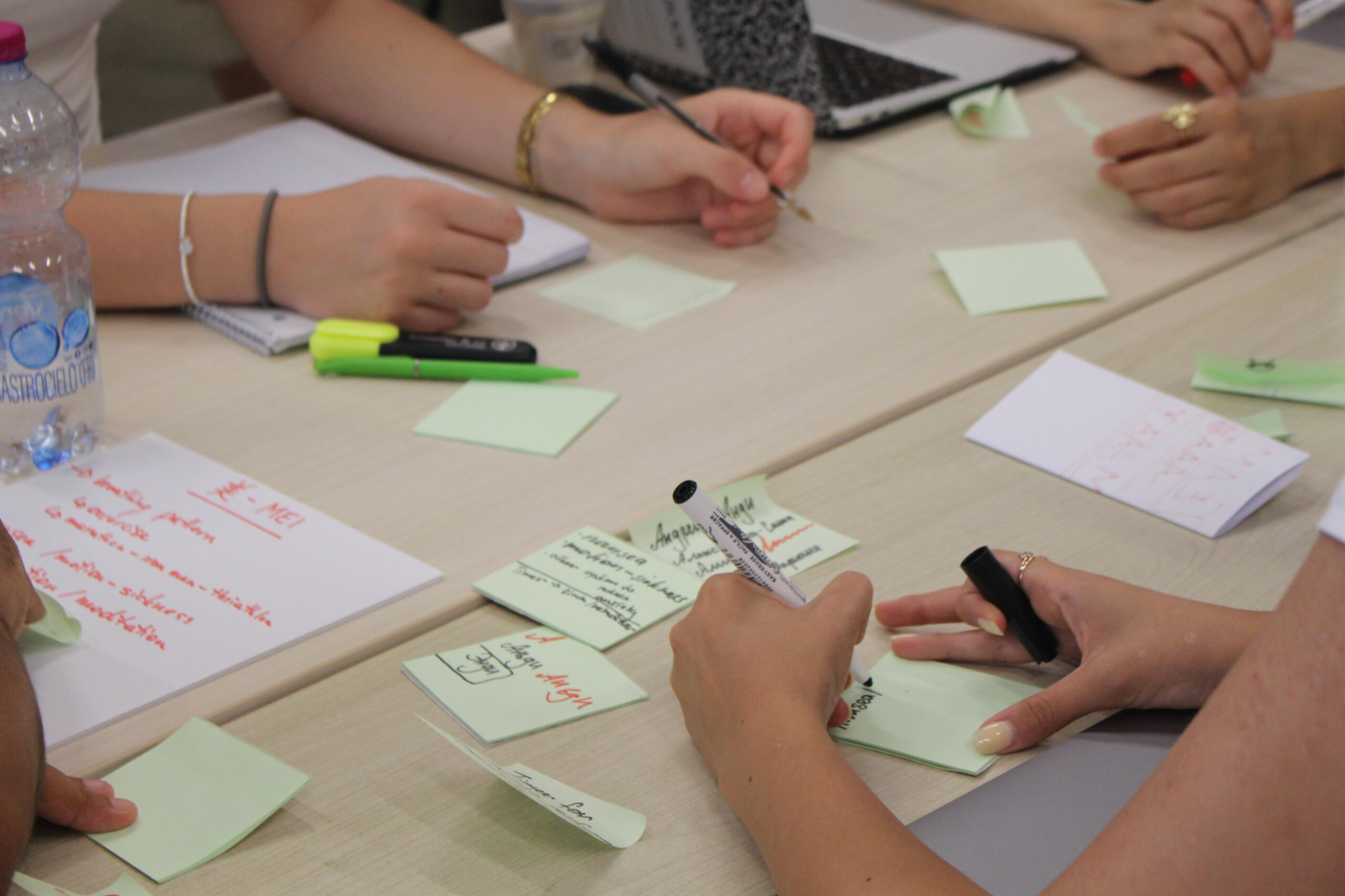
Ways We Can Work Together
Every founder’s situation is different: sometimes cash is tight, sometimes equity is the better currency. That’s why I offer two flexible ways to collaborate:
Deferred Payment Plan (Cashflow-Linked). Pay for mentoring in a way that matches your company’s cashflow. This means you get support now, and payments adapt to when the business is healthier.
Equity-for-Mentorship Swap. Instead of cash, we can structure mentoring as an equity agreement. That way, I invest my time and experience today, and share in the upside of your company’s success tomorrow.
Browse by category
Nurture Your Mind
Connect & Lead with Heart
Let's continue the conversation...Share this resource:
Embracing the Benefits of a Digital Detox: Rediscovering Life Beyond Screens
by Jorim Holtey-Weber
TL;DR
Digital detoxing breaks tech dependency, allowing deeper human connections, personal clarity, and natural well-being.
Why this Matters
While our digital devices promise endless information, connectivity, and entertainment, they often deliver the opposite—information overload, confusion, and reactivity. As our reliance on technology grows, it's crucial to step back and see the value of living in the moment and experiencing the world beyond screens.Personally, I've stopped using my running watch because I noticed how it disconnected me from the enjoyment of the scenery. I used to check it to see my pace, kms, time, etc. when in reality, what mattered more was to be present and pay attention to my environment.On average, people spend upwards of 6h daily on screens, which has led "technostress", leading to increased stress, emotional exhaustion, and apathy.
Reconnecting with Nature
Our dependency on tech often insulates us from nature. “Technology’s tendency to insulate us from nature while we’re participating in it ultimately leads to us failing to absorb all it has to offer.” — Brian Mackenzie, UnpluggedSpending time outdoors cultivates an awareness that digital devices can’t replicate, offering a true sense of being fully alive. Our gadgets frequently distract us, causing us to miss out on the experiential wisdom nature provides.Actionable Steps:
Engage in Nature-Based Activities: Choose activities that require minimal or no tech intervention, such as hiking or walking in a park, to foster deeper interaction with the natural world.
Scheduled Tech-Free Time: Start with a specific, achievable window, like 1 hour before bed or a no-phone Sunday.
Immersive Experiences: Practice sensory engagement while outdoors—for example, notice five sounds, four textures, and three colors during a mindful walk.
I've scheduled one day a week to be without anything digital: no phone, no laptop, no music, no ebooks. It's just me interacting with my physical environment, going for walks, spending time with friends, and recharging.
Restoring Personal Connections and Instincts
We've increasingly sacrificed real human interactions for artificial connections offered by online platforms. This trend risks not only emotional but societal havoc. Our instinctual cues about our health and how we interact with our environment become suppressed when we rely heavily on gadgets.“If you wear a device 24/7, you begin relying on it to tell you how your body is performing...now millions of people are content to hand over their self-monitoring and decision-making to a machine.” — Brian Mackenzie, UnpluggedActionable Steps
Cultivate Interpersonal Relationships: Prioritize face-to-face interactions with friends and family. Engage in conversations without the interruption of notifications.
Trust Your Instincts: During physical activities, reflect on how your body feels instead of checking devices for feedback. Try yoga or stretching for enhanced body awareness.
Reflect on Tech Dependency: Journal experiences during tech-free times using prompts like “How did my mood change after unplugging today?”
After my digital detox day, I feel alive and motivated to go back to work, which wasn't always the case before.
Embarking on a digital detox is not just about relearning to live without constant connectivity; it’s about rediscovering the richness of life that often goes unnoticed when viewed through a screen. By detaching from devices and diving into nature, we foster creativity, improve well-being, and build a foundation for meaningful relationships.Today, try setting a 1-hour phone-free window or going for a 15-minute tech-free walk. Notice how you feel afterward, and reflect on how even small steps can create space for deeper connection and clarity.
Share this resource:
How to Give Candid Yet Compassionate Feedback
by Jorim Holtey-Weber
TL;DR
In a startup environment, change is the norm, and the ability to navigate that landscape swiftly is critical. Fusing compassion with candidness in feedback is essential for maintaining momentum while cultivating a growth-oriented culture with high trust.
Why this Matters
Startups thrive on rapid innovation and adaptability, requiring leaders to nurture a culture where teams feel supported yet challenged to perform at their peak. Leaders adept in balancing compassion with direct feedback create spaces where this growth can flourish efficiently.
Balancing Candour and Compassion
Compassionate leadership, particularly in the fast-paced world of startups, is about aligning empathy with purposeful action. It's about more than just understanding your team's challenges; it's about proactively addressing them to drive both individual and collective success.What is Compassionate Leadership?
Empathy and Understanding: At its core, compassionate leadership emphasizes empathy—understanding and sharing the feelings of team members. Leaders need to recognize the challenges their teams face and be present in their interactions.
Action-Oriented Empathy: It's not just about feeling empathy but taking actions that align with that empathy to improve team dynamics and outcomes. This involves making informed decisions that consider the well-being of team members.
Providing Context and Clarity: Effective leaders provide context to help team members understand the rationale behind decisions and feedback. Clarifying how individual roles and performances align with organizational goals fosters a sense of purpose and motivation.
Clear, Constructive Feedback: Compassionate leaders provide feedback that is clear, direct, and constructive. They focus on behaviours and outcomes and avoid personal criticisms, fostering a safe environment for growth.
Focusing on Individual and Collective Benefit: The feedback process should always highlight how individual improvements contribute to personal growth and the success of the team and organization. This reinforces a shared vision and collaborative spirit.
By integrating compassionate leadership with candid communication, startups can maintain agility and foster a culture of continuous improvement and resilience.
Actionable Steps
Practice Clarity as Kindness: Be direct and transparent. Clear feedback, given swiftly, helps keep everyone aligned and propels the team forward.
Be Present and Engaged: In fast-paced settings, emotional and mental presence during exchanges enhances connection and understanding, vital for effective communication.
Find the Balance: In your interactions, focus on outcomes that benefit both the individual and the team. Prioritize meaningful improvements over trying to be liked.
Embrace Necessary Confrontations: In startups, avoiding issues can slow progress. Cultivate the courage to tackle problems head-on and address them decisively.
For startups, the agility to adapt and grow is driven by leaders who can seamlessly integrate empathy with straightforward communication. Begin by shedding traditional constraints and embrace a more human-centric leadership style. Experiment with these strategies, share your experiences, and watch how they can catalyze a culture of growth and resilience.
Let's continue the conversation...Share this resource:
Lead with Agreements, Not Expectations
by Jorim Holtey-Weber
TL;DR
Shifting from expectations to mutual agreements has a transformative power.It improves workplace dynamics, boosts productivity, and strengthens personal connections.
Why this Matters
Poor communication and unmet expectations can severely damage relationships, both in professional and personal contexts. By understanding the impact of expectations and learning to cultivate agreements, individuals and leaders can foster healthier relationships and improve productivity, morale, and personal fulfilment.
Shift from Expectations to Agreements
Key Insight: Expectations lead to disappointment and anxiety, whereas agreements foster collaboration and satisfaction. In business, unsaid expectations often create hidden tensions and ruin workplace harmony. For example, a foreman expecting his team to complete a project without explicitly agreeing on terms can lead to friction. Instead, agreeing on deadlines and responsibilities helps all parties feel respected and committed to achieving the objectives.Actionable Steps:
Identify Current Expectations: Reflect on areas in your life where expectations are silently set. Are there assumed duties at work or unstated desires in your personal life?
Transform Expectations into Agreements: Initiate conversations where expectations exist and collaborate to turn them into explicit agreements. This can start with as small as renegotiating a household chore.
Practice Active Listening: Engage the other person in dialogue and listen to their input on what agreeable terms might look like. Make adjustments until both parties are satisfied.
Regular Review and Adaptation: Agreements are meant to evolve. Periodically check in to ensure that they are still relevant and beneficial.
Personal Relationships & Emotional Health
Key Insight: Expectations in personal relationships often cause resentment and disappointment. Steve Chandler transformed his 15-year marriage by focusing on mutual agreements rather than unspoken expectations, preventing disagreements and fostering a nurturing environment.Actionable Steps:
Open Dialogue with Loved Ones: Discuss what each person expects versus what agreements can be made instead.
Create a Relationship Charter: Outline key areas where mutual agreements are necessary to avoid assumptions – such as financial planning or holiday arrangements.
Surprise with Flexibility: While agreements provide a clear path, allow room for pleasant surprises by not rigidly sticking to agreements, where flexibility can enhance the bond.
Reflect on your relationships with both colleagues and loved ones. Where can you transform expectations into agreements? By doing so, you create a collaborative space that nurtures understanding and reduces tension. Share this article with someone you think might benefit from the shift towards agreements, and challenge them to explore this in their own life.
Let's continue the conversation...Share this resource:
Journalling for Healing
by Jorim Holtey-Weber
TL;DR
Journalling about traumatic or stressful events over 4 sessions can improve emotional processing, reduce anxiety, and promote long-term healing. This structured method, backed by extensive research, helps reframe negative experiences and increase emotional clarity.
Why this Matters
Writing about difficult experiences has been shown to improve physical and emotional health. This journaling protocol provides a simple, research-based approach to reduce pain, improve sleep, and process unresolved trauma effectively.
The Writing Session
Writing deeply about the most traumatic or stressful experiences for 15-30 minutes, spread over 4 sessions, allows the brain to reprocess emotions and thoughts constructively.Actionable Steps:
Structure Your Writing Sessions
Write for 15-30 minutes, but not less.
Focus on the facts of the event, emotions you felt then and now, and any connections from the past or future (e.g., people, events).
Use complete sentences and write continuously, even if it’s emotional.
Frequency
Write 4 times in a month. These can be consecutive days, once a week, or spaced as needed.
After Writing
Take 10-15 minutes to decompress in a quiet place.
Expect to feel emotional immediately after writing; this is normal and temporary.
Key Guidelines for Effective Journalling
The process works best when approached with honesty and structure while allowing flexibility to explore emotions at your own pace.Actionable Steps:
Choose the Right Setting: Write in a quiet, private space where you won’t be interrupted. Avoid doing this exercise just before bed as it can disrupt sleep.
Write Continuously: Don’t stop to censor or edit your thoughts—keep the flow going. It’s okay to pause for emotions (e.g., tears), but resume writing without judgment.
Optional Analysis: If you wish, review your writing later to observe the shift from negative to more positive language and coherence over the sessions. You can also tear up the writing afterward if that feels right for you.
Managing the Emotional Impact
It’s normal to feel sadness, fatigue, or even mild depression immediately after writing, but long-term benefits far outweigh short-term discomfort.Actionable Steps:
Recognize Emotional Responses: Understand that feeling worse temporarily is part of the healing process. Trust that long-term clarity and reduced emotional burden will follow.
Consider Starting Small: If writing about the most traumatic event feels overwhelming, begin with a less intense stressful experience.
Optional Sharing: While this exercise is personal, you can choose to share your writing with a therapist for deeper exploration. Avoid sharing casually to prevent re-traumatization.
This protocol is a powerful, evidence-based tool for emotional healing and clarity. Commit to your first 15-minute writing session this week, and trust the process. Whether you choose to analyse it later or let it go, journalling can be a vital step toward healing and self-understanding.
Let's continue the conversation...Share this resource:
Antifragility: Grow Stronger Through Chaos
by Jorim Holtey-Weber
TL;DR
Antifragility is the capability to thrive and grow stronger in the face of stressors, change, and chaos. Embracing change as the only constant can transform challenges into opportunities for development, helping us evolve beyond mere resilience.
Why this Matters
In an ever-evolving world, change can often feel overwhelming. Many individuals face stress and fear when dealing with unpredictable circumstances. By understanding and embodying the principle of antifragility, we can shift our mindset to perceive change not as a threat but as a catalyst for growth and innovation.
Shift in Perspective
Antifragility, a term coined by Nassim Nicholas Taleb, refers to systems, organisations, or individuals that not only withstand changes but actually benefit from them. Where resilience means bouncing back from hardship, antifragility involves getting better because of it — thriving amidst the chaos. Consider a plant thriving in various weather conditions because it adapts to unpredictable climates. Similarly, our ability to adapt, learn, and evolve is crucial in becoming antifragile.Actionable Steps
Embrace Uncertainty: Begin viewing unpredictability as an opportunity. Each challenge or disruption is a chance to learn and evolve.
Build Diverse Skills: Enhance adaptability by acquiring various skills and experiences. This helps you pivot as situations change.
Reflect with Intent: After every major challenge, conduct a structured review by asking, "What worked? What failed? What can I do differently next time?" Turn lessons into actionable improvements.
Cultivate Strong Networks: Surround yourself with diverse, resilient individuals who can offer support, insights, and opportunities during turbulent times. Collaboration amplifies adaptability. For this, read the article on social support.
Adopting an antifragile mindset allows us to harness the transformative power of change. As we learn to perceive changes as drivers of innovation rather than obstacles, we unlock our potential to thrive. Start evaluating challenges differently today, recognising each one as a stepping stone for growth and innovation. Share this perspective with others, fostering a community that views change as an opportunity for collective evolution.
Let's continue the conversation...Share this resource:
Listen to Your Emotions: A Roadmap to Personal Growth
by Jorim Holtey-Weber
TL;DR
Emotions are not our adversaries; rather, they are allies that help us navigate life's complexities and understand ourselves better. By recognizing, understanding, and accepting emotions without judgment, we can harness their power to navigate challenges and grow.
Why this Matters
Many people view their emotions as obstacles, often feeling conflicted or overwhelmed. However, reinterpreting emotions as signals or guides can empower us to respond constructively. By taking small actions, we can often find the drive needed to persist.
Shift in Perspective
Emotions are valuable signals to help us understand ourselves and the world. For instance, sadness may indicate a need for change, while anxiety can signal a need for caution or preparedness.Actionable Steps
Start Small: Break down goals into tiny actions that can be accomplished easily, triggering a momentum of achievement.
Build a Routine: Establish consistent patterns or rituals that encourage taking action even when motivation is low.
Reflect on Your Progress: Regularly assess your achievements to build a sense of accomplishment, which can be inherently motivating.
Next time you experience a strong emotion, pause and listen—what is it trying to tell you? Practice naming your emotions and reflecting on their messages. The more you embrace them as guides, the better you’ll navigate life’s complexities. Start today by journaling one recent emotional experience and what you learned from it.
Let's continue the conversation...Share this resource:
Stop Waiting for Motivation: Create It
by Jorim Holtey-Weber
TL;DR
Motivation doesn’t come first—action does. Taking even small steps toward your goals can spark the motivation you need, transforming inertia into progress and creating lasting momentum.
Why this Matters
Many people view their emotions as obstacles, often feeling conflicted or overwhelmed. However, reinterpreting emotions as signals or guides can empower us to respond constructively. By taking small actions, we can often find the drive needed to persist.
Shift in Perspective
Rather than waiting for inspiration to strike, taking small steps can often fuel motivation. Behaviour often precedes and shapes emotions, a principle rooted in behavioural psychology.Actionable Steps:
Acknowledge Your Emotions: Instead of suppressing your feelings, recognise and name them. This can be the first step in understanding their source and what they might be telling you.
Reflect on Emotions' Messages: Consider what each emotion might be signaling about your needs or circumstances. Journaling can be a good tool for this.
Validate Without Judgement: Accept your emotions without labelling them as 'good' or 'bad.' This can foster a better relationship with your emotional self.
Feeling stuck? Take one small action toward your goal today, no matter how unmotivated you feel. Progress fuels motivation, not the other way around. Choose one simple step you can take now, and watch how momentum builds from there.
Let's continue the conversation...Share this resource:
It’s Not What You Say—It’s What They Hear: Mastering Effective Communication
by Jorim Holtey-Weber
TL;DR
Effective communication isn't judged by what is said but by the impact it has on the recipient. By focusing on the results of our communication rather than simply what we express, we can create deeper understanding and stronger connections.
Why this Matters
All too often, we find ourselves misunderstood or unable to convey our intentions clearly, leading to frustration and miscommunication. By shifting our focus to how our messages are received and understood, we can enhance personal and professional relationships and achieve better outcomes.
From Expression to Impact
The real measure of successful communication is not in the clarity of your message but in how it influences the thoughts and behaviours of those you are communicating with. Instead of focusing purely on expression, pay attention to the effects.Actionable Steps:
Observe Reactions: Pay attention to verbal and non-verbal cues in your audience to gauge understanding and impact.
Seek Feedback: Regularly ask for feedback to understand how your communication is being perceived.
Adapt and Adjust: Be flexible in your approach. If the initial message doesn't land well, be prepared to try a different strategy.
Cultivating Responsive Communication
Communication should be a two-way street where both speaking and actively listening are equally valued. Emphasising the responsiveness instead of the delivery enhances the overall impact.Actionable Steps:
Practise Active Listening: Focus on truly understanding what the other person is conveying without formulating responses prematurely.
Clarify and Reflect: Use reflective responses to ensure understanding, repeating back what the other person has said in your own words.
Encourage Open Dialogue: Foster an environment where questions and clarifications are welcome, thereby ensuring the message is correctly received and interpreted.
Consider the difference between what's spoken and what's heard in your interactions. Evaluate your communication by the response it evokes. How will you adapt your approach to ensure your messages have the desired impact? Share this perspective with a colleague or friend who might benefit from recalibrating their communication skills.
Let's continue the conversation...Share this resource:
Fuelling Startup Innovation Through Agility and Autonomy
by Jorim Holtey-Weber
TL;DR
Startups thrive when agility meets self-management. By embracing adaptability and empowering team members with decision-making authority, startups can maintain a fast-paced, innovative environment that continuously evolves.
Why this Matters
In the startup world, constant change is the norm. Rigid processes can stifle creativity, while agile practices and self-management empower teams to adapt quickly, test ideas, and scale what works. This dynamic balance drives breakthrough innovation in competitive markets.
Agility as a Startup Superpower
Agility in startups means more than just responding to change—it’s about proactively seeking opportunities through experimentation. Agile startups can outpace competitors by testing, learning, and pivoting faster.Actionable Steps:
Adopt Lean Startup Methods: Use principles from The Lean Startup by Eric Ries to build, measure, and learn continuously.
Launch MVPs Fast: Build Minimum Viable Products (MVPs) to test assumptions quickly with real users.
Hold Weekly Sprints or Retrospectives: Use short, focused sprints to stay adaptable while learning from past results.
Self-Management for Startup Teams
Startups succeed when teams aren’t micromanaged but trusted with autonomy. Self-managed teams take initiative, solve problems creatively, and share accountability—key traits in fast-growing environments.Actionable Steps:
Define Startup-Level Goals Clearly: Use shared OKRs to align teams on startup goals while leaving execution up to them.
Empower Decision-Making on the Frontlines: Allow team leads and specialists to make key decisions without unnecessary approvals.
Foster Learning Through Fail-Forward Culture: View failures as experiments. Celebrate lessons learned to boost team confidence and resilience.
Agility and self-management aren’t just buzzwords—they’re lifelines for startups navigating uncertainty. Take one actionable idea from this article and apply it to your startup this week. Consider how trusting your team’s autonomy or launching a quick experiment could spark innovation and drive success.
Let's continue the conversation...Share this resource:
The Secrets to Good Sleep No Matter Your Shift
by Jorim Holtey-Weber
TL;DR
No matter your work schedule, you can achieve quality sleep by creating a consistent routine, managing your environment, and supporting your body's natural sleep-wake cycle. These strategies ensure better rest even with rotating or night shifts.
Why this Matters
Irregular work shifts disrupt the body's internal clock, making restful sleep difficult. However, by adopting proven strategies, shift workers can align their routines with their body's needs, improving rest, focus, and overall well-being.
Build a Consistent Sleep Routine
Consistency signals the body that it’s time to rest, even if sleep hours are unconventional. By keeping a steady sleep schedule, the body can adjust more effectively.Actionable Steps:
Stick to a Fixed Sleep Schedule: Go to bed and wake up at the same times daily, even on days off.
Create a Wind-Down Routine: Develop a calming pre-sleep ritual like reading or meditating to prepare the mind for rest.
Avoid “Revenge Bedtime Procrastination”: Skip the urge to stay up late catching up on personal time after a shift.
Optimize Your Sleep Environment
A sleep-friendly environment can counteract shift-related sleep disruptions, helping the body relax and sustain deeper rest.Actionable Steps:
Control Light Exposure: Use blackout curtains or a sleep mask to simulate nighttime, even during daylight hours.
Manage Sound: Use earplugs, white noise machines, or calming sound apps to block disruptive noises.
Regulate Temperature: Keep the room cool for optimal sleep conditions.
Optimize Your Sleep Environment
Even with changing shifts, supporting the body’s circadian rhythm can enhance sleep quality and energy levels.Actionable Steps:
Get Natural Light Exposure: Spend time outside during daylight hours to reset your internal clock.
Limit Caffeine & Stimulants: Avoid these within six hours of your intended sleep time.
Use Melatonin Wisely: Consider melatonin supplements with professional advice to regulate sleep timing.
Shift work doesn’t have to mean poor sleep. Choose one strategy from this list and apply it this week. Consistency, a sleep-friendly environment, and mindful habits can help you rest better and stay energized. What action will you take today for better sleep, no matter your shift?
Let's continue the conversation...Share this resource:
5 Things High Achievers Should Do For Their Mental Wellbeing (But Usually Don’t Do)
by Jorim Holtey-Weber
I’ve written this article based on my own personal experience as well as my experience of coaching high achievers. Many of the high achievers I’ve coached were sceptical regarding the five tips I describe below but have, upon implementing them in their routines, started leading a more joyful life full of exciting opportunities.
1. Take time to relax
Yes, I know, you probably want to fit more into your day and taking time to relax seems counterproductive… but bear with me for a moment! The single most important piece in your life is that you yourself function well. Stephen Covey wrote in The 7 Habits of Highly Effective People that “most of us spend too much time on what is urgent and not enough time on what is important.”There will be tasks that seem more urgent to you than taking time to relax but I ask you to think more long-term. Be aware of prioritising not-so-important but seemingly urgent tasks over the truly important things. Michael Neill, author and coach of high performers even goes so far as to say “the feeling urgency is one of the most reliable indicators that what you actually need to do is slow down and take a break.”So, how does taking time to relax look like? I'd like to invite you to properly take time to relax. I would like you to go “all in” – no half-way relaxing, no relaxing but doing something else on the side, just relaxing: Going for a walk or meditation could be examples of this.If you have no experience of meditation, look for a guided meditation. Otherwise, you can just put a timer, close your eyes, and let go of any desire to control anything.
2. Enjoy yourself
Building on the theme of 1. (that your highest goal is to function well), we have to admit that any human functions better when they feel good. We are most productive when we feel positively challenged and excited, we connect best with others when we enjoy our life and love ourselves, etc.One simple yet powerful technique I do frequently with my clients is asking them to write a list of things that give them joy. Commonly they write down things like being around friends and family, reading, listening to music, dancing, being in nature, eating good food, etc.I'd like you to create such a list. Take 10 minutes or however long it takes you to write down 10-20 items. If you like homework, the homework for you is to engage in one or more of these activities each and every day from now on.
3. Close mental chapters
This point is sometimes mentioned in business literature but with a different twist. Traumas of any severity exist because of stories that haven’t been completed, that still have an open end to it (either in reality or in the mind of the person). Looked at it from another side, I have noticed that I am most productive when I can focus in on one single task and don’t have to think about anything else - I’m sure you can relate to that.The way to become more productive and to recover from traumas is to close these mental chapters. Sometimes,
these mental chapters are conversations:
Something you still have to tell your parents, an unfinished argument with your partner, an email that you haven’t received a reply to yet, etc.
50% of these you can directly influence by taking the initiative to bring the conversation to an end. The other 50% of conversations are those, in which you are waiting for a reply. Here, I recommend Tim Ferriss’ tip to be specific and assertive to avoid unnecessary back and forth.
Choose the Right Setting: Write in a quiet, private space where you won’t be interrupted. Avoid doing this exercise just before bed as it can disrupt sleep.
Write Continuously: Don’t stop to censor or edit your thoughts—keep the flow going. It’s okay to pause for emotions (e.g., tears), but resume writing without judgment.
Optional Analysis: If you wish, review your writing later to observe the shift from negative to more positive language and coherence over the sessions. You can also tear up the writing afterward if that feels right for you.
4. Sleep a lot
The more active – physically or mentally – you are, the more important it is to have a proper rest. During sleep, memories are consolidated and your ability to concentrate is restored. Furthermore, muscles repair and recover. On the flipside, not resting enough will make you more prone to injury due to negligence (at home, in the traffic, etc.), experience depressive symptoms, difficulty concentrating, and cardiovascular diseases.How much sleep do you need? The average adult needs 7 to 9 hours of sleep every day. The exact amount can vary from person to person though and can increase on exhausting days.
5. Prioritise relationships
High achievers are often lone wolves and work primarily independently – whether by themselves or in groups. This can be due to various reasons that I won’t explain here. What I want to draw your attention to is that being human is about collaboration. Yes, we might be efficient in working independently but ultimately, the human experience is about being together with others.I will, again, relate to Stephen Covey here. In the first chapters of the abovementioned book, he explains that we humans develop from being dependent (as a baby and child) to being independent (late teenage years). He then goes on explaining that Independence is not the highest level. Interdependence is.Interdependence requires a person to have known independence but also to have understood that living is about connecting with others and have chosen to relate to other people (knowing that they can go back to be independent whenever necessary).Please, start recognising this more in your life. Be kind to yourself and other people. Build quality relationships, express yourself vulnerably and ask for help.
Let's continue the conversation...Share this resource:
Being Relentless: The Mindset of Unstoppable Success
by Jorim Holtey-Weber
TL;DR
Being relentless means pushing beyond limits, embracing discomfort, and maintaining unwavering focus on your goals. Inspired by Tim Grover’s philosophy, this mindset separates elite performers from the rest by eliminating excuses and demanding excellence.
Why This Matters
Success isn’t about talent alone—it’s about an unyielding commitment to growth, discipline, and resilience. Tim Grover’s concept of being relentless is about cultivating a mental edge that allows you to thrive under pressure and outperform competition.
The Relentless Mindset
Relentless individuals don’t wait for motivation; they take action despite obstacles, fatigue, or doubt. This mindset is built through discipline, self-trust, and an obsession with improvement.Actionable Steps:
Eliminate Excuses: Identify common justifications for inaction and replace them with immediate execution.
Embrace Discomfort: View setbacks and resistance as necessary steps in the path to mastery.
Set Non-Negotiable Standards: Define clear personal expectations that you refuse to compromise.
Execution Over Emotion
Being relentless means taking action regardless of how you feel. Emotions fluctuate, but disciplined execution ensures progress.Actionable Steps:
Train Yourself to Show Up: Develop a habit of taking action even when motivation is low.
Detach From Feelings: Acknowledge emotions but don’t let them dictate decisions.
Create a Performance-Driven Routine: Structure your day around actions that build consistency.
The Relentless Approach to Competition
Relentless individuals don’t compete to participate; they compete to dominate. They analyze, adapt, and push beyond conventional limits to create undeniable success.Actionable Steps:
Study Your Competition Relentlessly: Learn their strengths and weaknesses to create a strategic edge.
Refuse to Settle: Push past “good enough” and aim for absolute mastery.
Develop an Obsession With Winning: Channel focus into continuous skill improvement and mental resilience.
Being relentless isn’t for everyone—it’s for those who refuse to settle for mediocrity. Decide today: What’s one excuse you’ll eliminate? What’s one action you’ll commit to daily, no matter how you feel? Take the first step and commit to relentless execution.
Let's continue the conversation...Share this resource:
Break Free From Your Personality, It's Limiting You!
by Jorim Holtey-Weber
TL;DR
Personality is not a fixed identity but a social construct largely created as a coping mechanism during by early life experiences. By questioning and redefining it, we open ourselves to limitless growth, transformation, and new ways of being.
Why This Matters
Many people feel confined by their personality, believing it defines who they are. However, personality is not innate—it is a learned response to external influences. When we stop identifying with these self-imposed limitations, we gain the freedom to choose how we show up in the world.
Personality as a Coping Mechanism
What we call personality is often a collection of habits and defenses we formed to navigate our formative years. It’s not who we are—it’s who we learned to be.Actionable Steps:
Observe Your Patterns: Notice recurring behaviours and ask, “Is this truly me, or is this how I’ve learned to protect myself?”
Challenge Your Labels: Replace statements like “I’m just not confident” with “What if I chose confidence in this moment?”
Experiment With New Ways of Being: Act outside your usual tendencies and see what changes (see below).
Breaking Free from Personality Constraints
Since personality is constructed, it can also be deconstructed. You are not obligated to remain the person you’ve always been.Actionable Steps:
Observe Your Patterns: Notice recurring behaviours and ask, “Is this truly me, or is this how I’ve learned to protect myself?”
Adopt the Creator Mindset: Instead of thinking, “This is just who I am,” shift to “I am whoever I decide to be.”
Use Language to Reshape Identity: Speak in ways that reinforce possibility, e.g., “I am becoming more…” rather than “I’ve never been good at…”
Commit to Fluidity: Allow yourself to change, grow, and reinvent without attachment to past versions of yourself.
Your personality is not your prison—it’s just a habit. What would change in your life if you no longer let an old story define you? Choose today to break free from outdated identity constructs and step into who you truly want to become.
Let's continue the conversation...Share this resource:
Fix the System, Not the Self: A Smarter Path to Growth
by Jorim Holtey-Weber
TL;DR
When outcomes fall short, it's more useful to improve the system than to blame yourself. By focusing on structure instead of self-judgment, you build sustainable success and self-trust.
Why this Matters
Many high-achievers fall into the trap of self-criticism when they miss goals. But the real issue is often not personal failure—it’s a broken or non-existent system. Shifting your focus from blame to design creates results without draining your energy or confidence.
Self-Blame Is a Dead End
Criticizing yourself doesn’t produce better outcomes. It reinforces a fixed mindset and stalls momentum. Systems thinking frees you from that loop.Actionable Steps:
Notice the Pattern: Instead of “I lack discipline,” ask “What system failed here?”
Name the Gap: Identify missing or weak structures (e.g., reminders, tools, time blocks).
Pause the Inner Critic: Replace “I’m bad at this” with “How can I support myself better?”
Design Systems That Support Success
Great results come from great systems—not willpower. Systems create predictable, repeatable outcomes.Actionable Steps:
Create Triggers: Use cues in your environment to prompt helpful actions (e.g., phone in another room, calendar reminders, people around you).
Automate or Batch Tasks: Reduce decision fatigue by bundling similar tasks or automating routine ones.
Track Inputs, Not (Just) Results: Measure actions you control (e.g., messages sent), not just outcomes (e.g., deals closed).
System Thinking Builds Confidence
When you shift from “I’m failing” to “my system needs tweaking,” you preserve your confidence and learn faster.Actionable Steps:
Review Regularly: Analyse what worked and what didn’t—without judgment.
Iterate in Small Steps: Improve one element of your system at a time.
Celebrate Adjustments: View system refinements as signs of growth, not corrections for personal weakness.
Next time you stumble, don’t default to self-blame. Ask instead: “What system would make this easier next time?” Design your environment to support who you’re becoming. Small shifts in structure can create massive change in outcomes.
Let's continue the conversation...Share this resource:





























back to all resources
Success Through the 4 Types of Social Support
by Jorim Holtey-Weber
TL;DR
Social support comes in four key forms: emotional, instrumental, informational, and appraisal. Understanding these types helps build meaningful connections by offering the right support when it’s needed most.
Why this Matters
Navigating life’s challenges is easier when we have supportive people around us. Each type of social support serves a unique role in fostering resilience, enhancing well-being, and strengthening relationships. By understanding these forms, we can better support others and seek the help we need.
Emotional Support
Emotional support provides empathy, love, and understanding. It’s about being present, listening without judgment, and validating emotions.Actionable Steps:
Give Support: Be present by offering a listening ear without trying to fix the problem.
Give Support: Use affirming phrases like “I’m here for you” or “That sounds really hard.”
Request Support: Let trusted individuals know when you need someone to listen without offering solutions.
Request Support: Ask for emotional validation by expressing how you feel and what kind of support you need.
Instrumental Support
Instrumental support involves providing tangible help. It’s about offering resources, practical assistance, or services that ease someone’s burden.Actionable Steps:
Give Support: Share actionable insights rather than overwhelming someone with too much information.
Request Support: Seek clear and specific advice when facing uncertainty or complex decisions.
Give Support: Share relevant examples or experiences to make guidance more relatable.
Request Support: Ask others for examples or experiences to better understand your options.
Informational Support
Informational support involves sharing knowledge, advice, or guidance to help someone solve problems or make decisions.Actionable Steps:
Give Support: Share actionable insights rather than overwhelming someone with too much information.
Request Support: Seek clear and specific advice when facing uncertainty or complex decisions.
Give Support: Share relevant examples or experiences to make guidance more relatable.
Request Support: Ask others for examples or experiences to better understand your options.
Appraisal Support
Appraisal support focuses on offering constructive feedback, encouragement, and validation. It helps individuals recognize their strengths and build confidence.Actionable Steps:
Give Support: Recognize accomplishments clearly, e.g., “Your presentation was well-researched and engaging.”
Request Support: Ask trusted colleagues or mentors for constructive feedback to help you improve.
Give Support: Use a supportive tone and focus on how to improve without criticism.
Request Support: Request specific feedback on strengths and areas for growth when preparing for challenges.
Social support strengthens our ability to thrive in life’s ups and downs. Reflect on which type of support you give most often and where you might improve. Also, consider where you could be more proactive in asking for support. What type of support will you engage with today to make a meaningful impact?
Let's continue the conversation...Share this resource: